The Ultimate Guide to Best Practices for SEO Content Writing in 2022
If content is king, then SEO is the empire.
Both of them can’t exist without one another. The king is useless if it doesn’t have an empire, and the empire will get disintegrated without a ruler.
So what does it mean?
It shows that you should take content writing and SEO side-by-side to rank your site, enhance visibility, drive more traffic, and increase sales.
But here is a dilemma:
If you miss out on SEO, your content gets lost. And if you write only SEO-focused content, your content loses the required crisp.
It means:
Finding the best practices for SEO content writing can be difficult because you have to find the best kicks that boost your content on SERPs while maintaining its value, quality, and appeal.
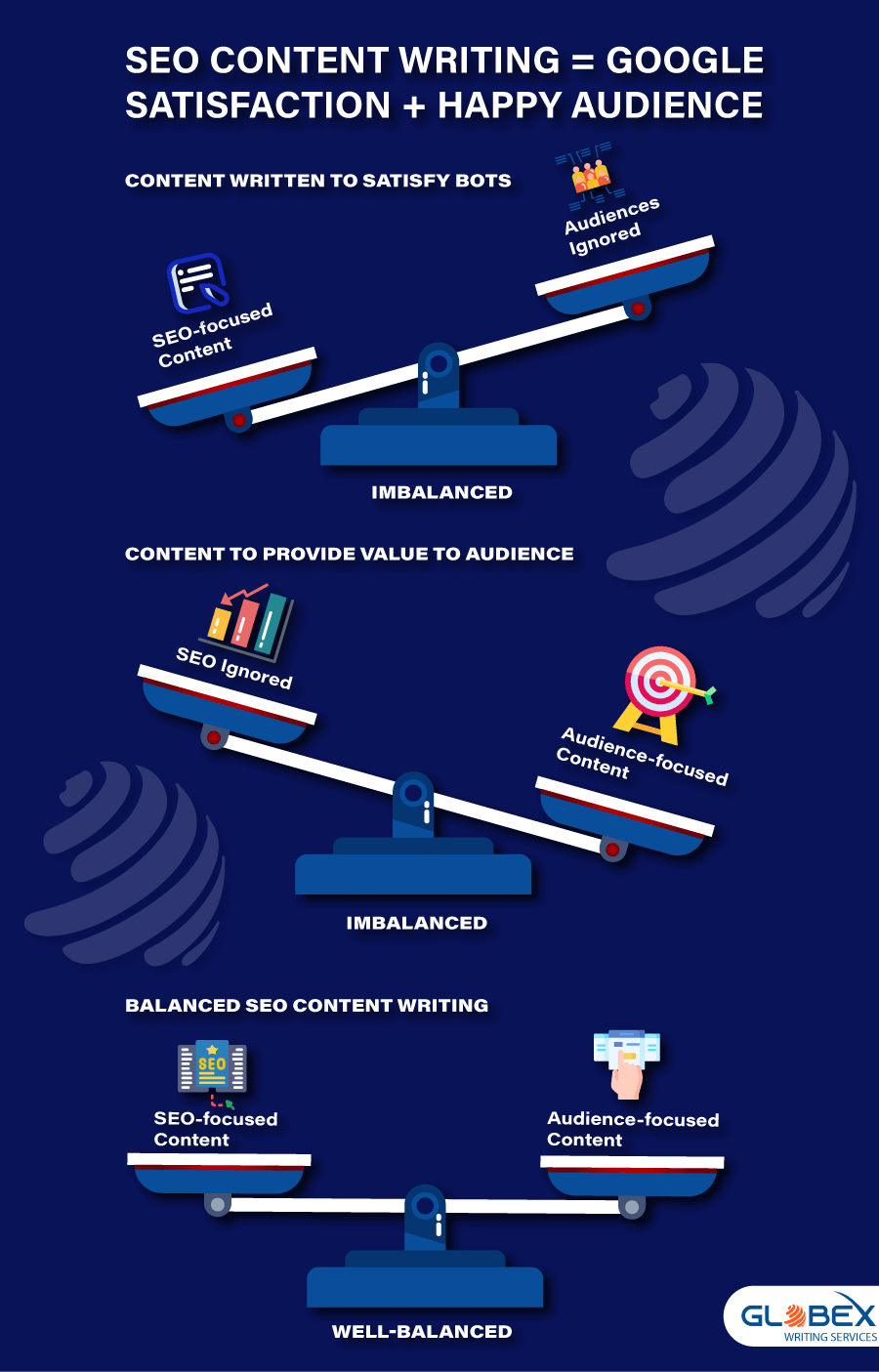

Yes, you guessed it right:
You have to write content for human beings and optimize for technology beings – bots – to rank higher.
On top of that:
The high-quality content standards of machines and humans are different.
SEO best practices for content writing are all about coming out of this situation successfully.
What is SEO Content Writing?
If you think that SEO content writing means to stuff your content with keywords, you are wrong.
In fact, Google calls it deceptive content writing practices and asks you to avoid it.
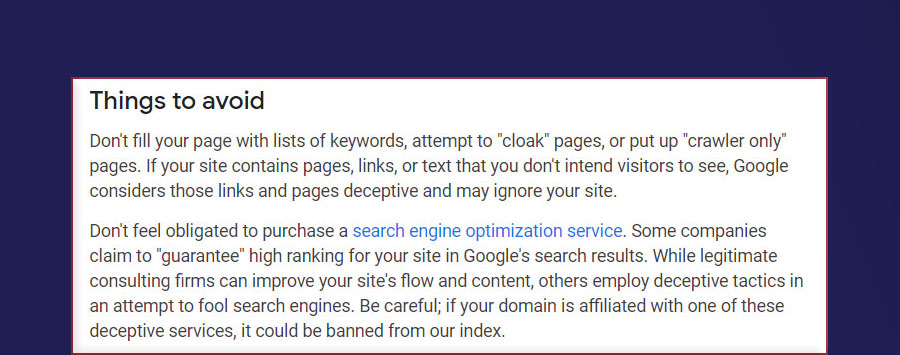

Unlike what some SEO content writing guides say, writing good SEO content is also not about using the right keyword phrases to optimize content (ONLY!).
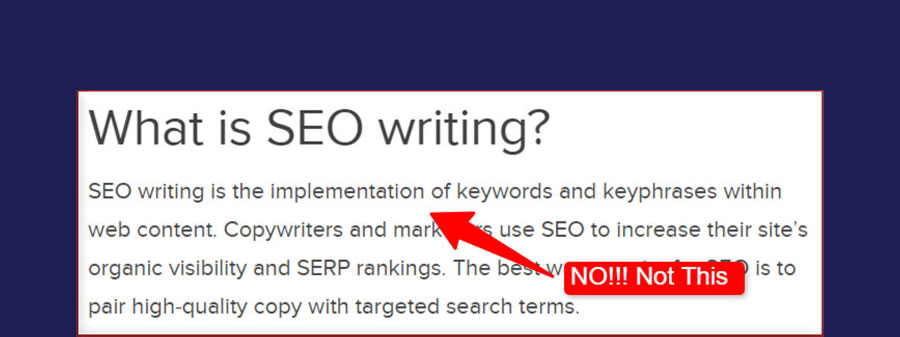

It is a whole science that involves a lot of things, considerations, and approaches.
So:
In other words:
Content writing for SEO is the convergence of two things: SEO and content.
- SEO means search engine optimization, the process of implementing SEO best practices to create content with more visibility that drives higher rankings and more organic traffic.
- Content refers to a high quality piece of information that addresses possible reader queries, offers engagement value, is authoritative, and readable.
When you combine both these factors, that’s when you take a step closer to making digital SEO content marketing a winning strategy for your online success.
Why is SEO Content Writing Important?
When you ask why you need to invest time and effort into SEO content writing, you need to consider one thing:
SEO content is not only based on how good your content is optimized. But also how valuable and engaging it is for the readers.
If the audience does not consume your content, all your finely induced keywords are useless because Google will also consider your content useless.
Even if you have written the most creative content copy that anyone has ever created (congrats, BTW!), it will not get too much organic traffic and rankings if it is not interactive enough (oops!).
So:
Benefits of SEO content writing are that it saves your content from becoming a victim of this kind of situation:
Your content gets discovered on search engines
Readers like and read it till the end
It has higher engagement and interaction
Readers share it like crazy
Google finds it worth ranking and sending organic traffic
Organic traffic pours, stays, and takes action
We can safely say that:
Fantastic Content + Best SEO Practices = SEO Content Writing that Works
Readability and Structure: Use subheadings, visual elements, bullets, and small paragraphs to enhance the readability and provide a better user experience.
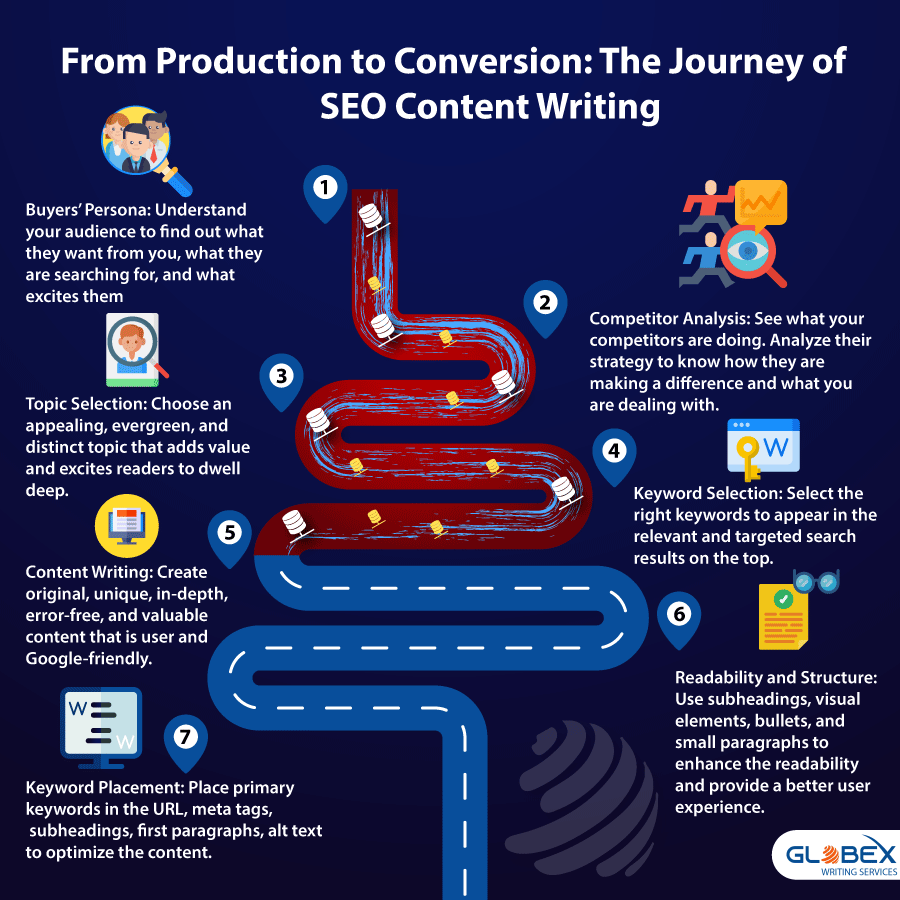

And when we say writing useful SEO content that works, it means creating content that:
- Boosts on SERPs for the targeted terms
- Triggers audiences to take the desired action
Best Practices for SEO Content Writing
Now you know why SEO content writing is your way to digital success.
But…here is another question:
What are the SEO basics for content writing?
STEP # 1: Study Your Audience’s Requirement
The best SEO content focuses more on satisfying readers than feeding bots.
Reason?
Because:
It gives your writing more of a natural touch rather than a machine-like approach.
When readers like content, Google automatically starts loving it.
What does it mean?
Understand what your target audience expects from your content?
Best practices for SEO content writing begin with developing a strong readers’ persona.
Audiences’ Persona + Quality Content Writing = High-Ranking Content that Gets Read
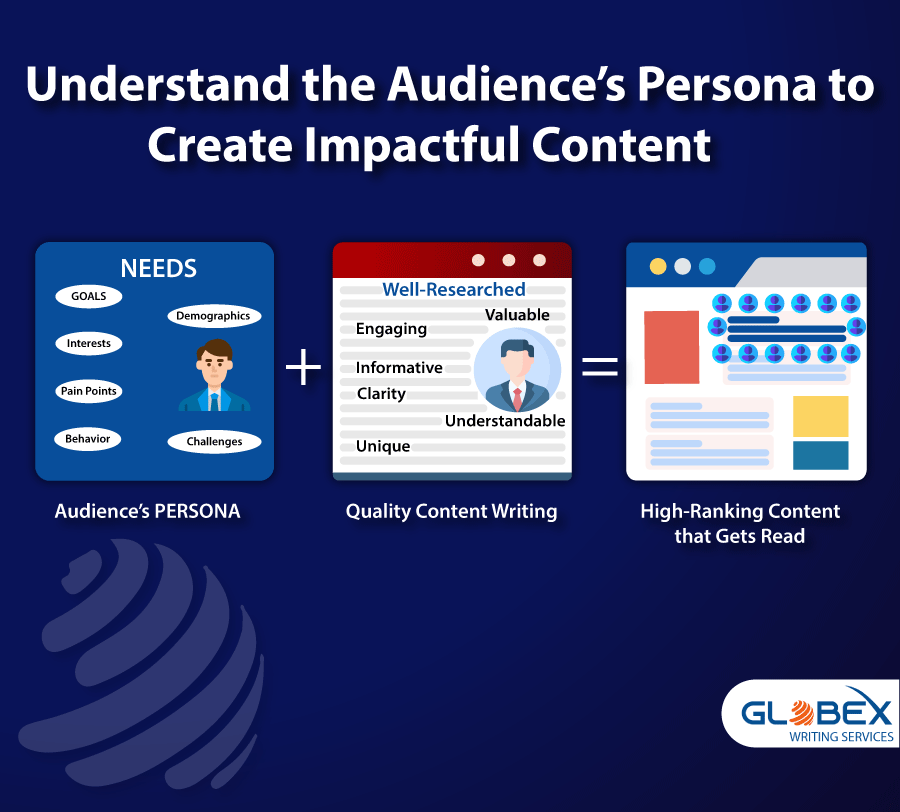

When you have a well-defined audience’s persona, you will know, WHAT…
- Are the pain points and problems of your readers?
- Kind of answers are they looking for?
- Are the interests of people of their age and profession?
- Types of goals and objectives they want to achieve?
- Are they interested in reading?
You can come up with a killing content that converts and gets read once you have the answer to all these questions.
STEP 2: Work on Evergreen Topics
You have found out who your target audiences are and what are their behavioral patterns.
You are also familiar with their struggles and possible solutions they have looked to ease out their problems.
Next, it is time to select what kind of topic you should work on, which:
- Gives them a solution
- Creates interest and engagement
- Generates the urge to keep on reading
- Satisfies their needs and desires
- Persuades them to take an action
Well, a popular topic can also do that.
But a popular topic is short-lived. It is trending right now, generating traffic overnight.
However, after the wave settles down, it will also fade away.
For example, here is a blog published on HubSpot talking about the effects of COVID-19 on businesses.


The blog did well initially but gradually lost its traffic.
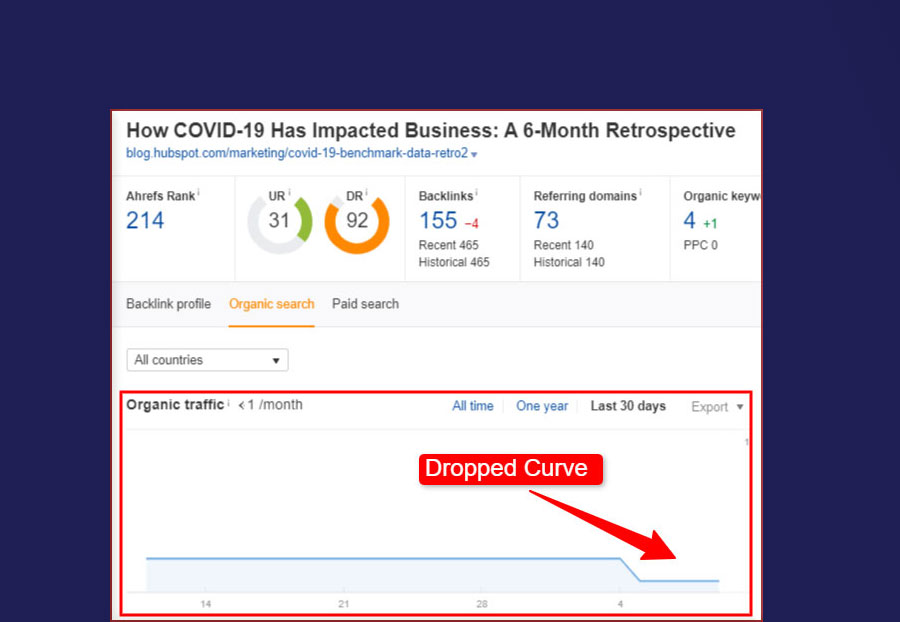

On the other hand, evergreen content lives for many years to come.
It stays relevant, keeps on giving a fair amount of traffic, and hence, ranks well.
So:
The basics of SEO content writing says that you should invest your time and effort in creating evergreen content that keeps on giving value for a long time.
STEP # 3: Understand the Search Intent
Research is important; in fact, very important.
But no matter whether you are writing a website’s copy or an article, if you don’t know what is the purpose of your audience to find your content:
All your research is useless.
Why? Because:
Your visitors will bounce back if your page will not offer them what they were looking for.
Results?
Google might shove your site down on SERPs.
To understand this, let’s take an SEO content writing example to understand the importance of user intent.
Case Study
Backlinko published a blog for the target keyword ‘SEO Strategy,’ titled: SEO Strategy Case Study: From #6 to #1 In One Week.
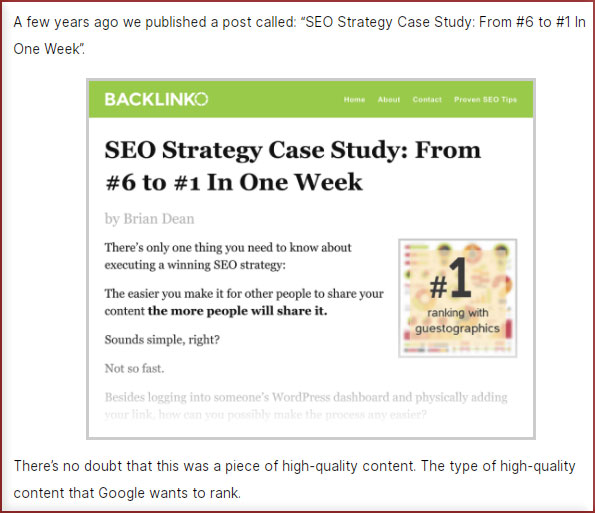

However, the blog didn’t do well despite having all the ingredients of a successful blog post.
So what happened here?
The blog post wasn’t matching the users’ intent.
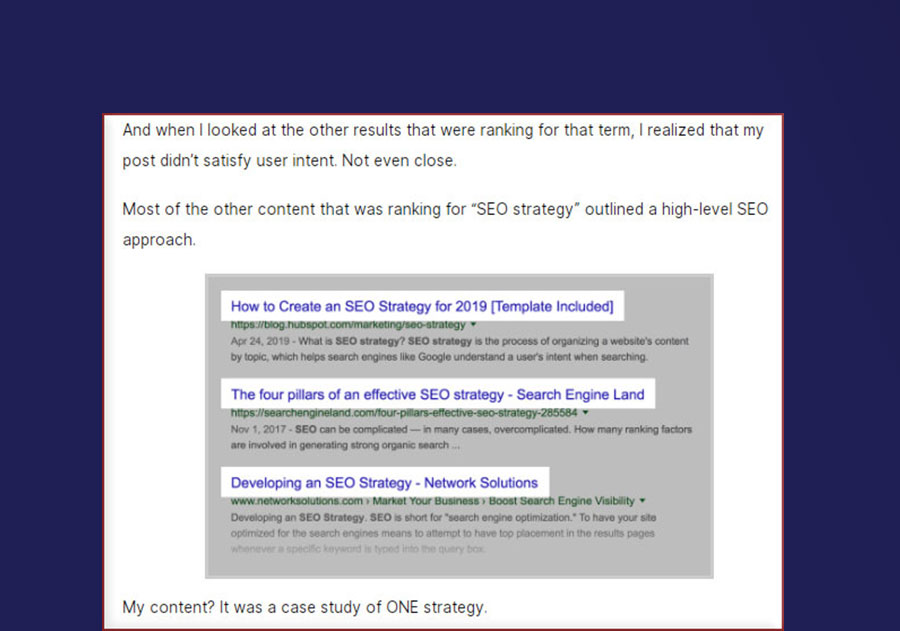

So the blogger changed the approach of the blog.
Results?
It started doing well on SERPs against the target keyword.
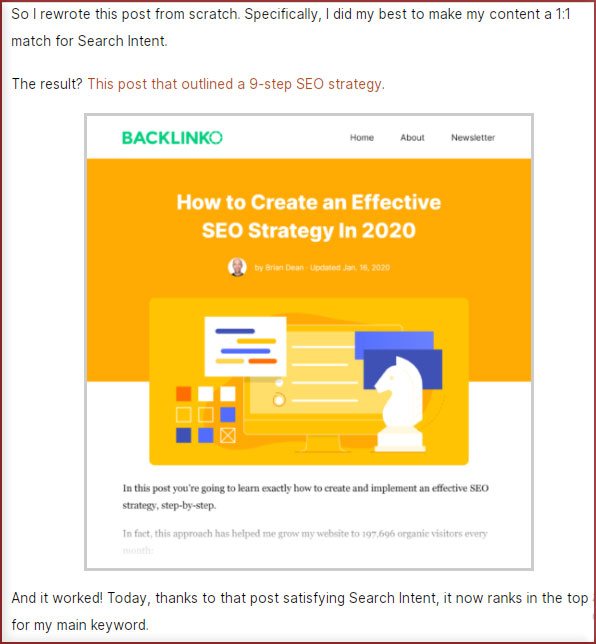

So no matter what spices you have added into your content, if it doesn’t match search intent, no one will read it.
And when no one reads it, Google will not rank it.
Simple!
Here is how you can find search intent.
STEP # 3: Choose the Right Keywords
Your keyword selection matters… a LOT!
In fact, it is one of the most important on-page SEO content writing factors.
You can’t rank in a search result with the power of content only.
Your content should include the relevant keywords and key terms that your target audience is using to find you.
But the problem is:
Keyword research takes more than using a few keyword research tools.
It needs a lot of consideration and deliberation.
If you want to learn SEO content writing, you also need to learn proper keyword research.
Because:
Finding the best keywords that are…
- Relevant to your target ranking intent
- Having a fair search volume
- Easy to rank on
- Used by the target audience
…is NOT EASY!
Broadly speaking, there are two types of keywords:
- Short-tail keywords
- Long-tail keywords
Here is the anatomy of these keywords:
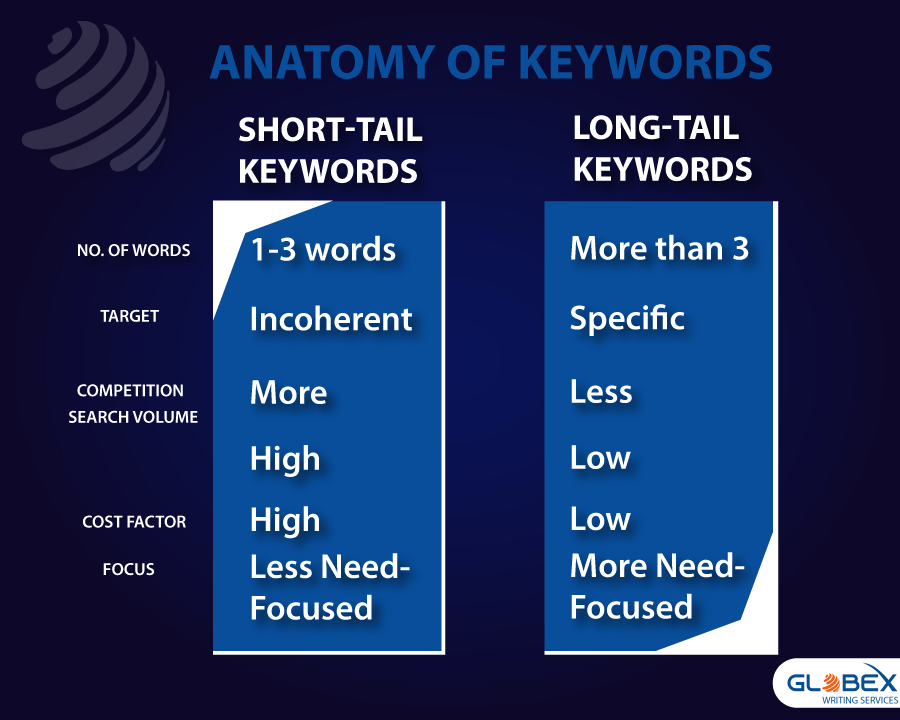

So:
- If you are going against highly competitive content with pre-established authority, it is better to go with less competitive keywords to come in the competition with a slow start.
- If you have a well-established authority, insert highly competitive keywords in the quality content to grab as much organic traffic as you can.
But the story of keywords doesn’t end here.
There is a new child in the house of keywords, called LSI keywords.
LSI, or latent semantic indexing, keywords are words/phrases that enhance the relevance of content for a particular topic.
Search engines take these words to understand your content and judge if your content is overall based on the topic it is written for.
So adding a few keywords is not going to help you now.
For example, if your topic reads…
“Tips to Make a Killing Content Marketing Strategy”
…you need more keywords than a content marketing strategy to stay relevant for this keyword.
You can use tools like Surfer SEO Content Editor to find LSI keywords.
Just type in your keyword and click ‘Create Content Editor.’


The tool will analyze various factors, including your competitors’ content, to come up with the best-suited keywords you can use.
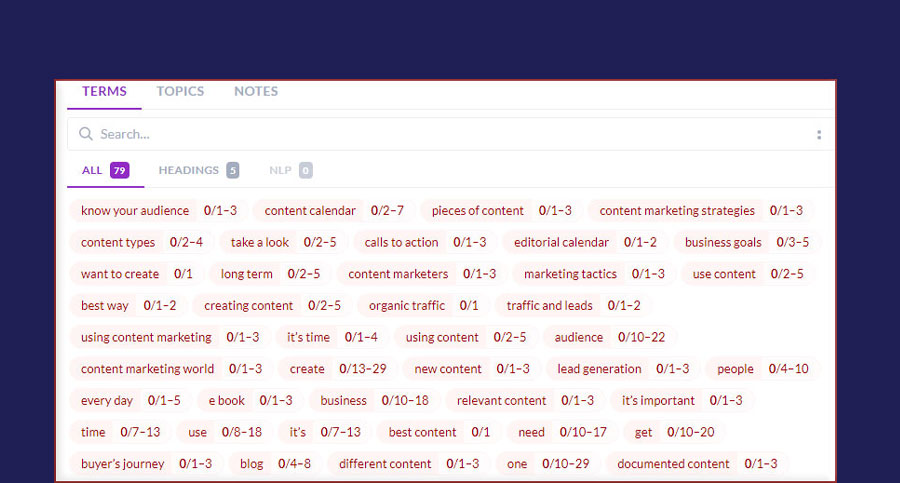

Obviously, you can’t use all these suggested keywords.
But it still gives a fairly better idea of different words you can use to boost your efforts.
STEP # 4: Place Keywords Where They Belong to
One thing you should know:
Placing keywords is a lot more than tossing a few random words in your content with your eyes closed.
Your target keywords DON’T belong to…well, anywhere.
You should distribute your keywords contextually throughout the content, sure, but things are a bit different for the focus or primary keywords.
Here is where to use keywords for SEO.
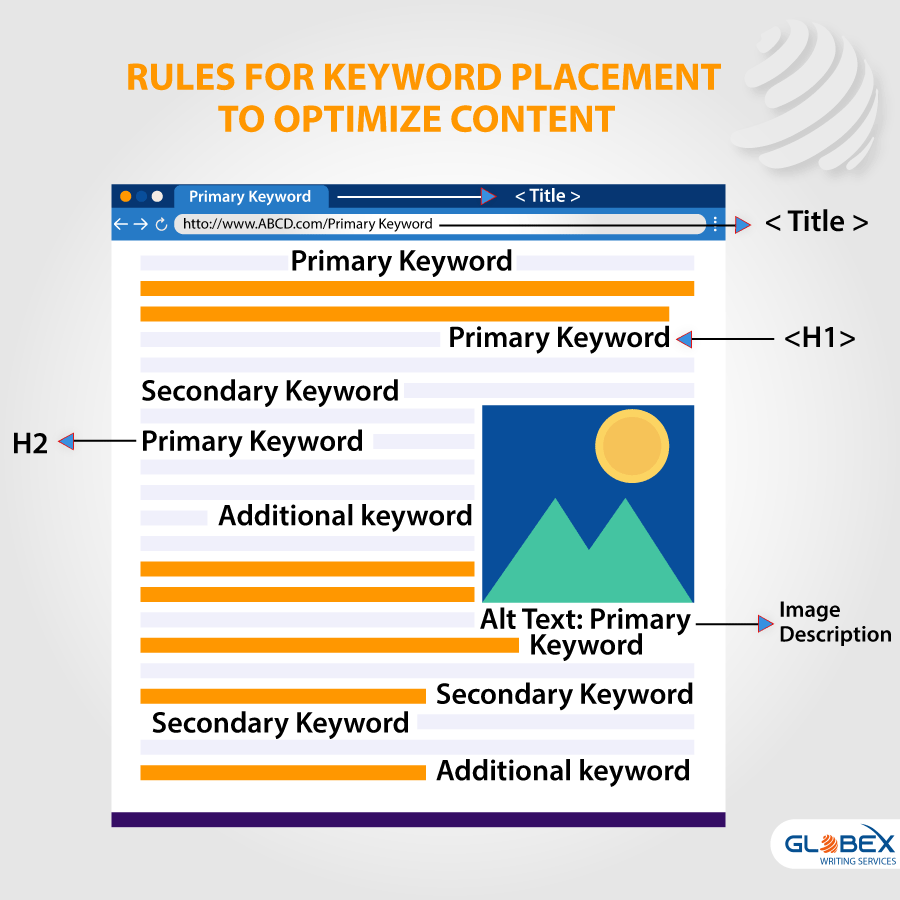

Usage of focus keyword on some places boosts more SEO significance than the other places.
Here are some content writing for SEO tips to use the primary keyword in your content.
Use it in:
- Heading (H1 and H2)
- First paragraph
- Title tag
- Meta Description
- URL
- Subheading
- Alt Image
That’s it!
STEP # 5: Create Content With a Hook
Search out any term, and you will find hundreds of search results for a single term.
And still, only a few get the chance to appear in the search result.
What does it mean?
It means the top-ranking content has something that others don’t have.
And that something is the ‘hook’ I am talking about.
The hook can be a:
- Different angle
- New concept
- Distinct point-of-view
…or anything that enhances the worth of the content from others.
Having a hook in your content helps you in two ways:
- Google gives more worth to your content
- Your content becomes a linkable asset
And being a linkable asset means that you wouldn’t have to struggle to get links from others.
Your content will become a link magnet because it will have the ‘thing’ that attracts people to link out to it naturally.
After that, ranking becomes a lot easier.
Here is a proof:
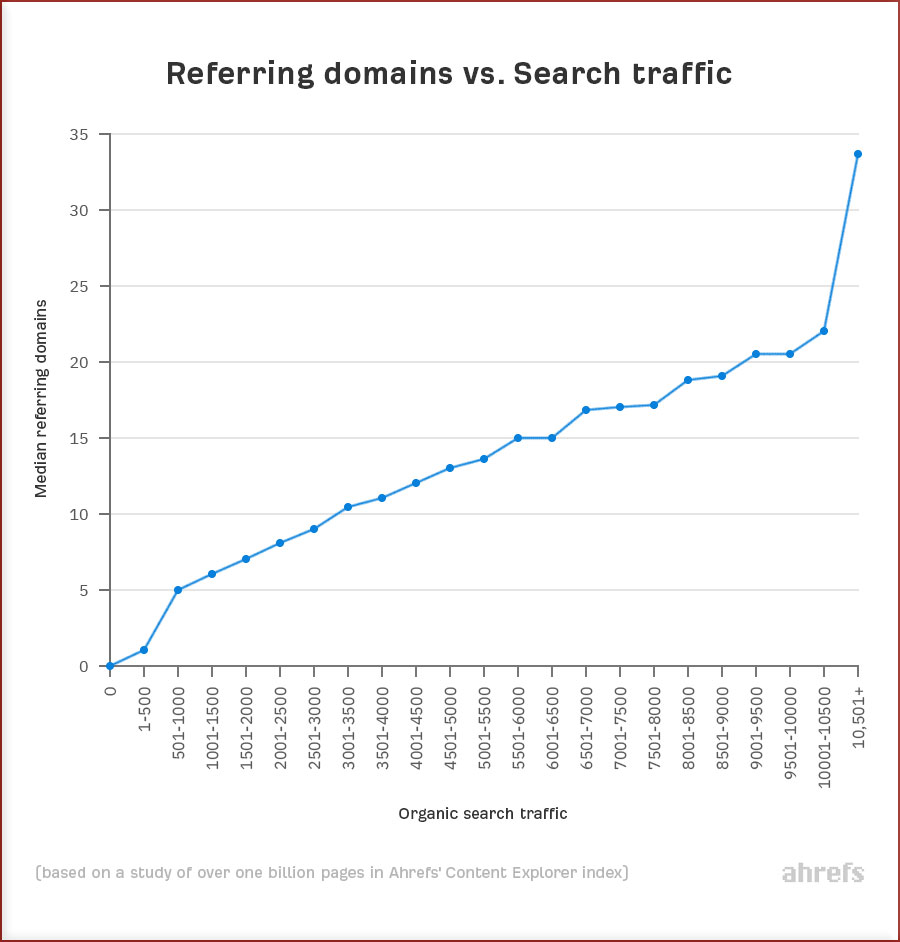

The trick is simple:
#1: Figure out why others are linking to the site
#2: Make a content strategy to outrank it
STEP # 6: Enhance the Readability and UX
You have created amazing content. It is hell creative and engaging.
But what if I say it might turn out to be useless despite all your efforts.
Yes, it can happen if it has poor readability and a bad user experience.
In case you don’t know, now, user experience is a ranking factor.
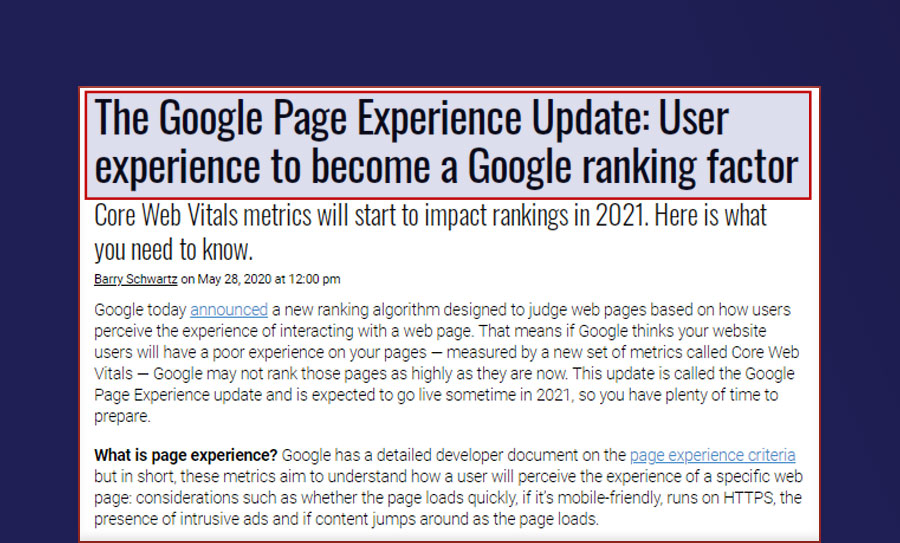

It means that besides the content, Google also analyzes:
- How people interact with your content
- What kind of value they get
- Do they easily find the information they are looking for
- What is their engagement factor
- What about their consumption patterns
Increasing user experience and readability is not always a matter of technical SEO.
Okay, fine, even the best SEO content writing service can’t do anything about HTTPS issue or navigation problems.
But:
The way you write, present, and design content impacts a lot on the content’s readability.
Here is what you can do to enhance the readability of the content:
#1: Bite-Sized Content
Don’t shove a huge mass of paragraphs down your readers’ throat.
Like, here is an example:
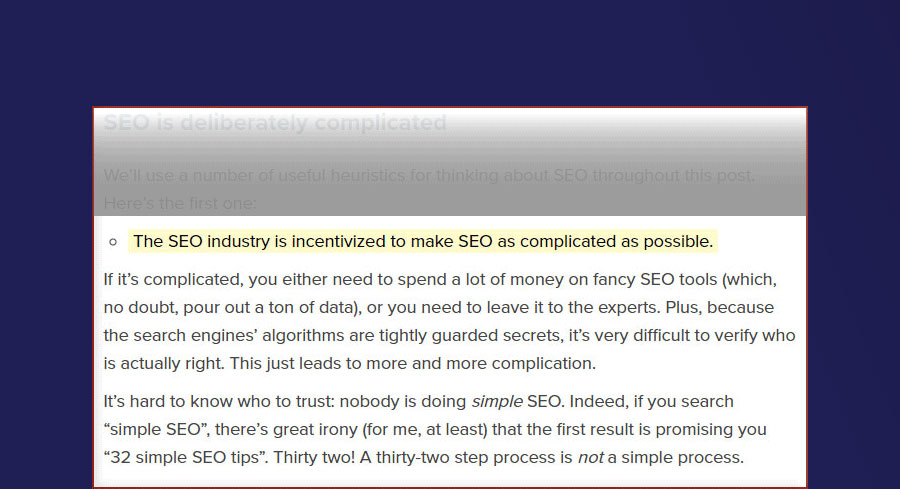

Seriously, piled up content seems like a sea of words that is ready to drown you.
Readers also feel hesitant to take a plunge into this dense content.
Comparatively, one-liner, small paragraphs invite readers to read on.
That’s what you should also be doing.
#2: Avoid Verbosity
Don’t use difficult words and jargons to sound smarter.
If you want to talk about apple, just say it apple instead of calling it the round, red fruit that Snow White ate in the story.
It will not make you sound smarter but will confuse your reader.
Result? They will lose interest.
So be simple, concise, and to-the-point.
#3: Add Visual Content
Visual content is like an ice breaker in your content.
It adds a tint of color in the otherwise black and white log of content that seems like ants having a gala.
In fact, bloggers are using more and more visual content in their content to enhance their engagement.


#4: Use Bullets and Subheadings
I personally like the fact that there is something like bullets and subheadings in the formatting style.
It automatically breaks your content into digestible, bite-sized chunks without trying much.
That’s why I always use this formula in my content:
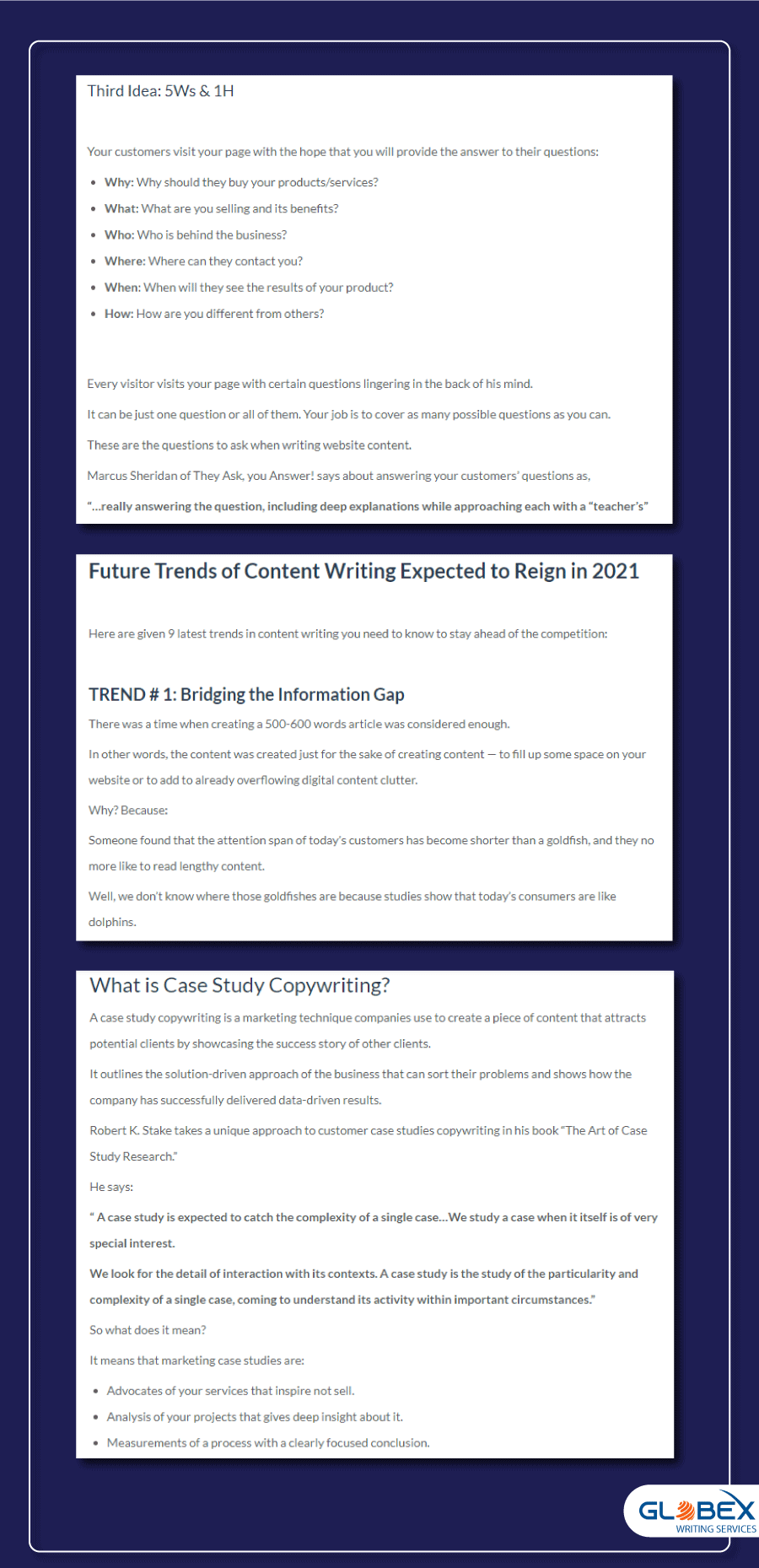

You can see that use of subheadings and bullets enhance the content’s readability dramatically.
STEP # 7: Write In-Depth, Lengthy Content
Don’t listen to those who say that writing lengthy content is useless because research says otherwise.
Research shows that Google gives importance to lengthy content.
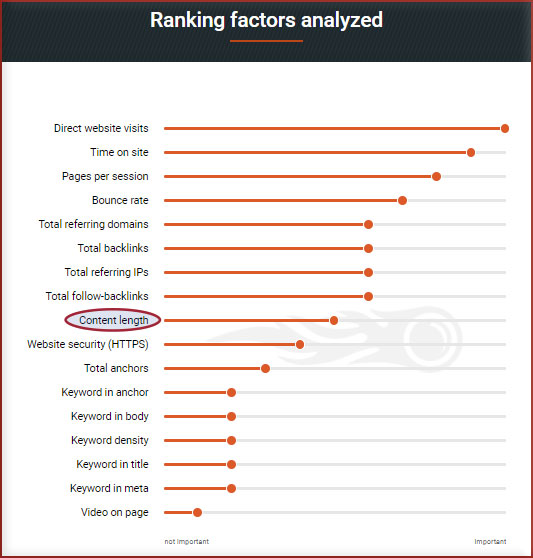

Besides the impact on ranking, people also like to read informative content that gives a deep insight into the topic.
That’s true that people’s attention span has lessened, and they skim content.
But it also depends on the type of content you produce.
If you are producing useless words and filler content, nobody will read it.
But people do read valuable content irrespective of its length.
So:
Try to exhaust your topic and induce as much value as you can.
Conclusion
When you start reading any guide on SEO content writing techniques, you expect to get bombarded with only a few methods:
Adding keywords and adding a few more keywords.
But the fact is that it is just a part of it.
Besides optimizing content for a keyword, best practices for SEO content writing include:
- Giving a better experience to readers
- Inducing value and distinction into your content
- Understanding readers and their requirements
- And above all, creating high-quality content
If your content focuses on these major factors, be assured that your content is SEO-friendly.
———————————-
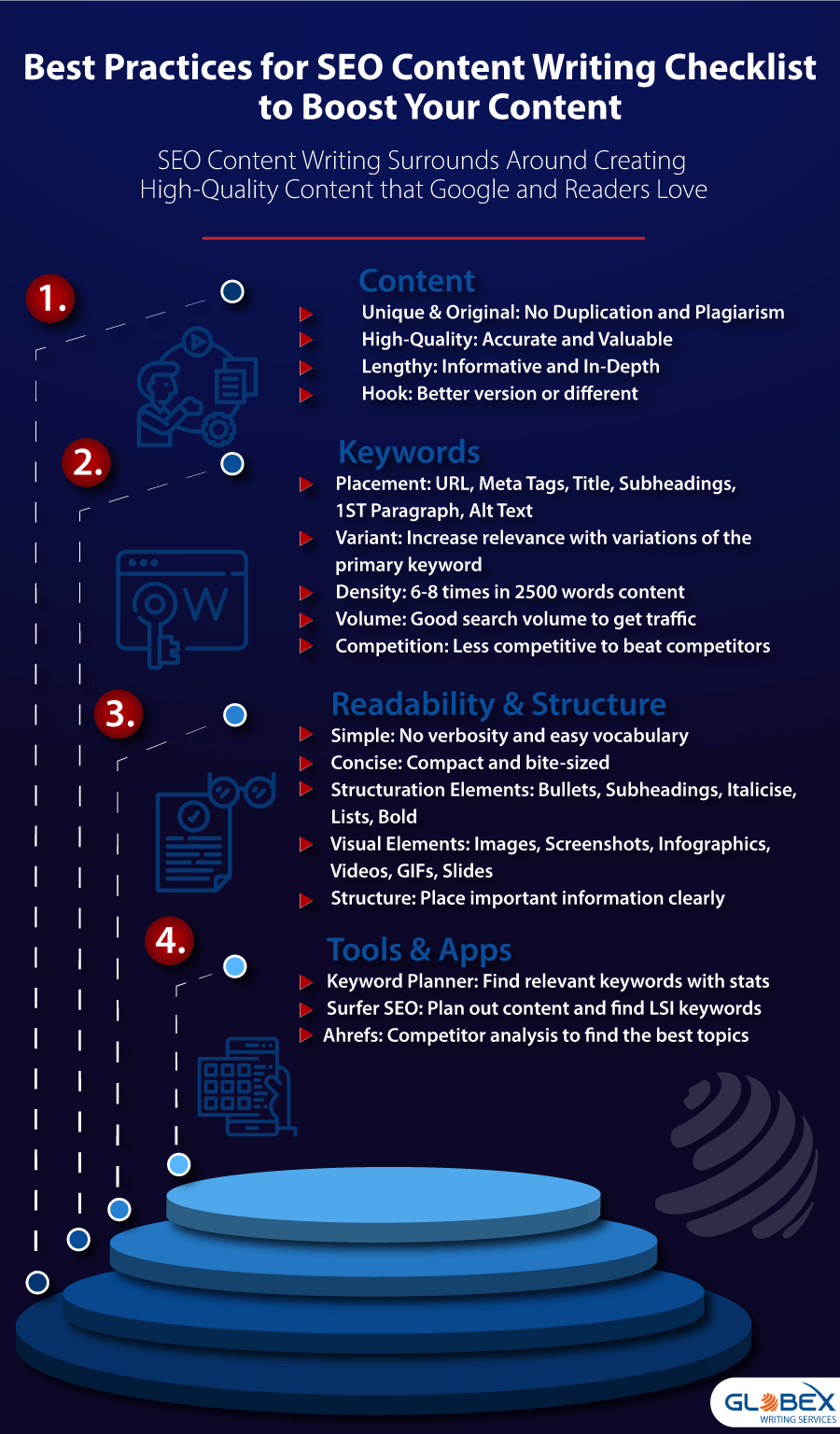




Leave a Comment